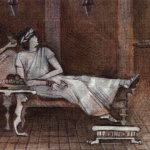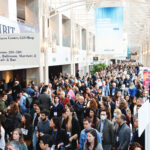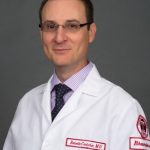My wife and I have each had experiences that reinforced these notions. My wife—quite discerning and rather knowledgeable about medicine (and other things)—has recognized omissions and inattention to details of the ritual evaluation when they are not included.
I recall a visit I made to an ophthalmologist for the first time for routine eye care. I was disappointed by the lack of personal warmth, somewhat cursory greeting, absence of white coat and tie,9-11 and inattention to old records. The ophthalmologist typed into the computer rather than engaging me in eye contact during our conversation, did not perform dilation, left the refraction to whomever optometrist I might see, and did not ask me if I had any questions. It was discomfiting.
Over time, we learn the subtleties that are essential for the good encounter. These were not they. I shared my reaction with one of my children (also knowledgeable about medicine and other things, though, disappointingly, not a physician), expecting, I guess, confirmation of my discerning insight. The response was something like, “Get over it, Dad. This is 2011. Southern California.” I thought about that, briefly, and fleetingly wondered about my investment in my child’s ivy-league education. I decided that I still believe that some traditions, symbols, and rituals have enduring value, not only for us but, importantly, for our patients (at least those who aren’t my children), and, I hope, for our acolytes.
Ritual in Action
Yesterday, I performed the “definitive” experiment. I determined to prove the notion that careful attention to the symbols, rituals, ceremonies, and traditions of the patient encounter would indeed win patients’ unqualified trust. I had been asked to see a patient in consultation for a colleague. My associate was frustrated by the patient’s unwillingness to accept his therapeutic recommendations.
Dr. Verghese had related that in his experience, when he was seeing patients with chronic fatigue syndrome, the ceremonies of listening attentively to the complete litany of complaints, carefully and visibly reviewing all records, and performing a lengthy, painstakingly thorough examination all invested him with an authority and confidence from patients that they were unwilling to accord physicians omitting any of these rituals. I had the luxury yesterday of being able to do this perhaps more conscientiously than usual because my “private practice” at the University of Southern California is limited, and often for consultations from other rheumatologists. Also, I decided to skip a potentially unproductive meeting and allocate all the time this patient might wish.


